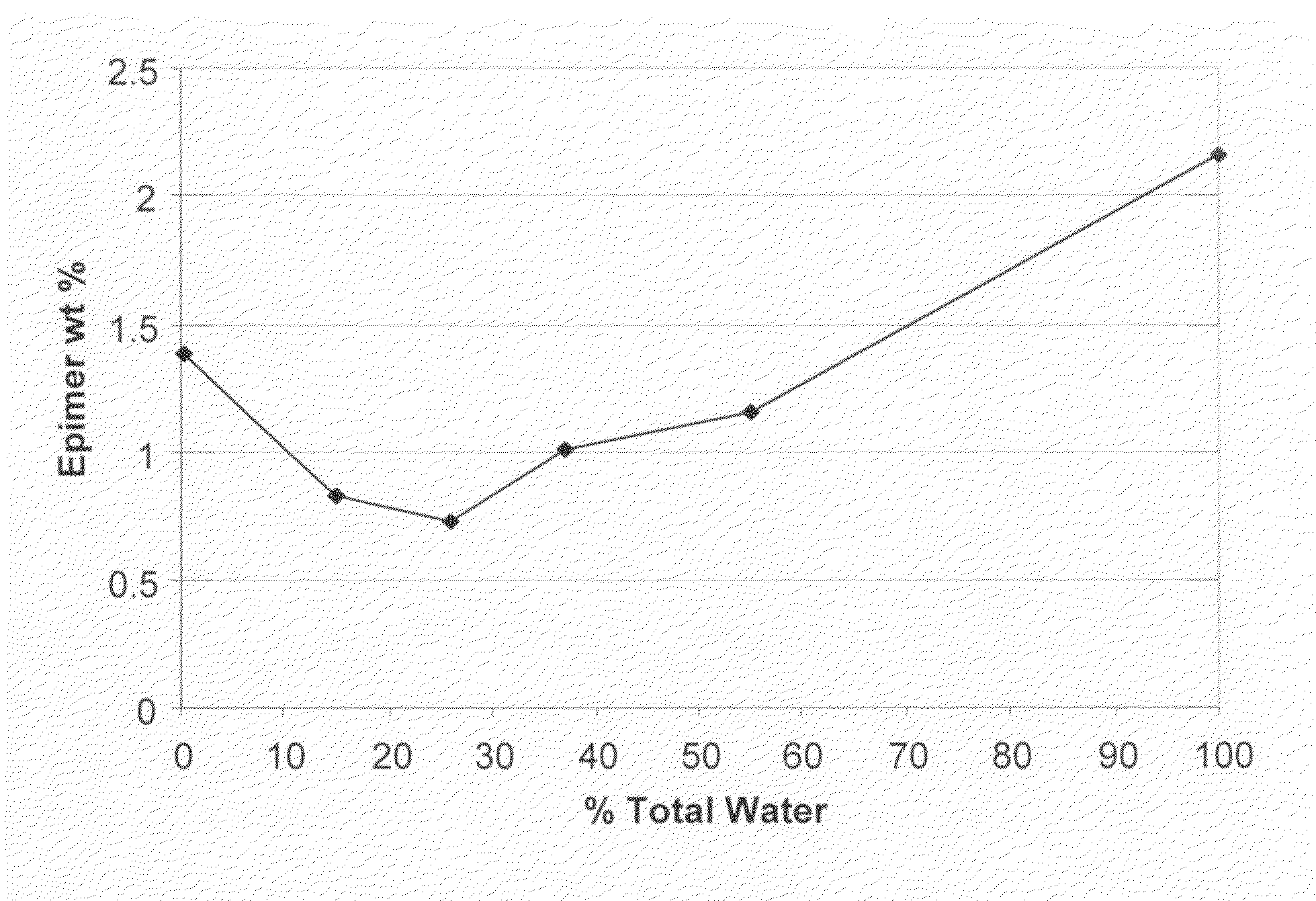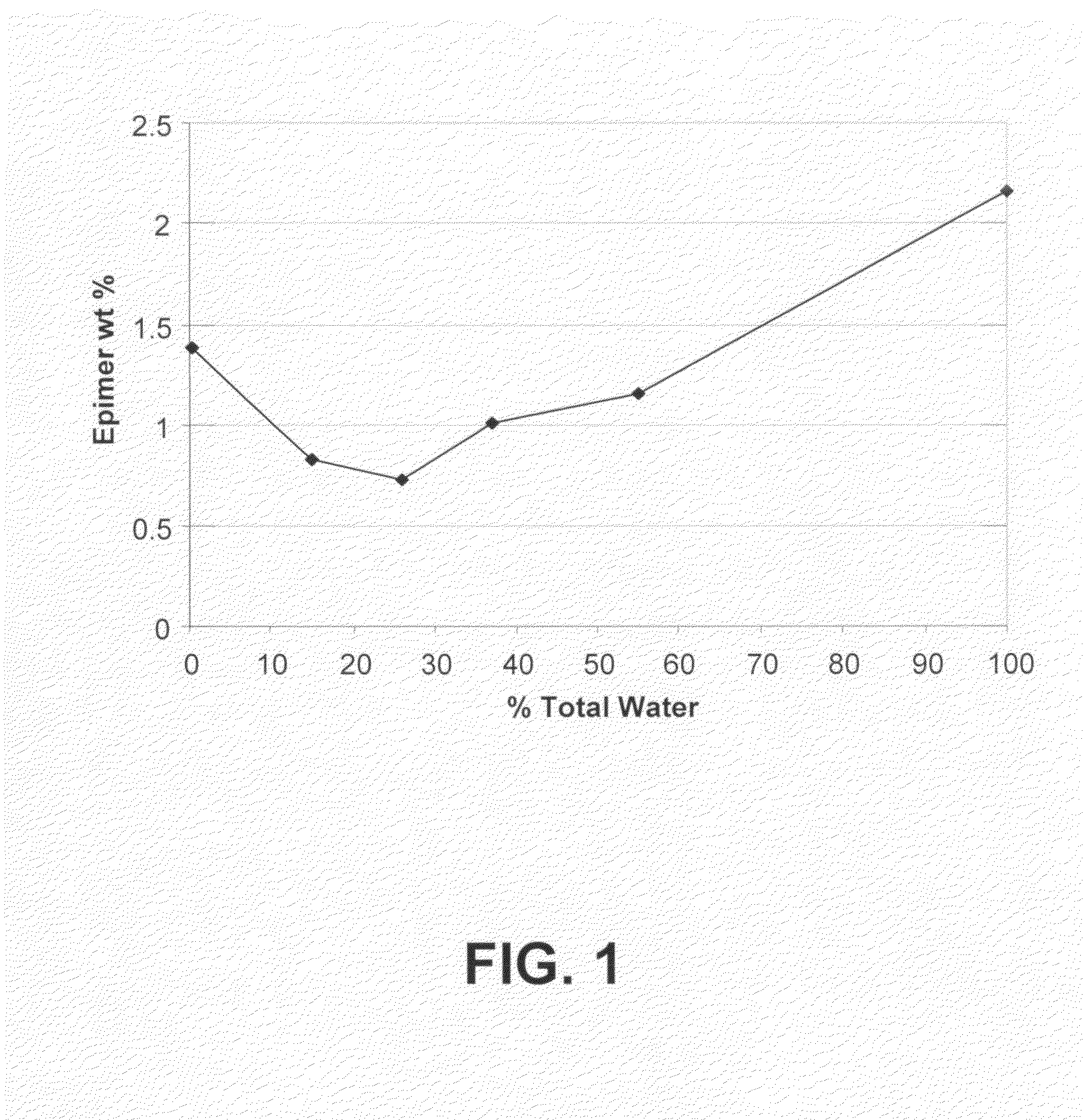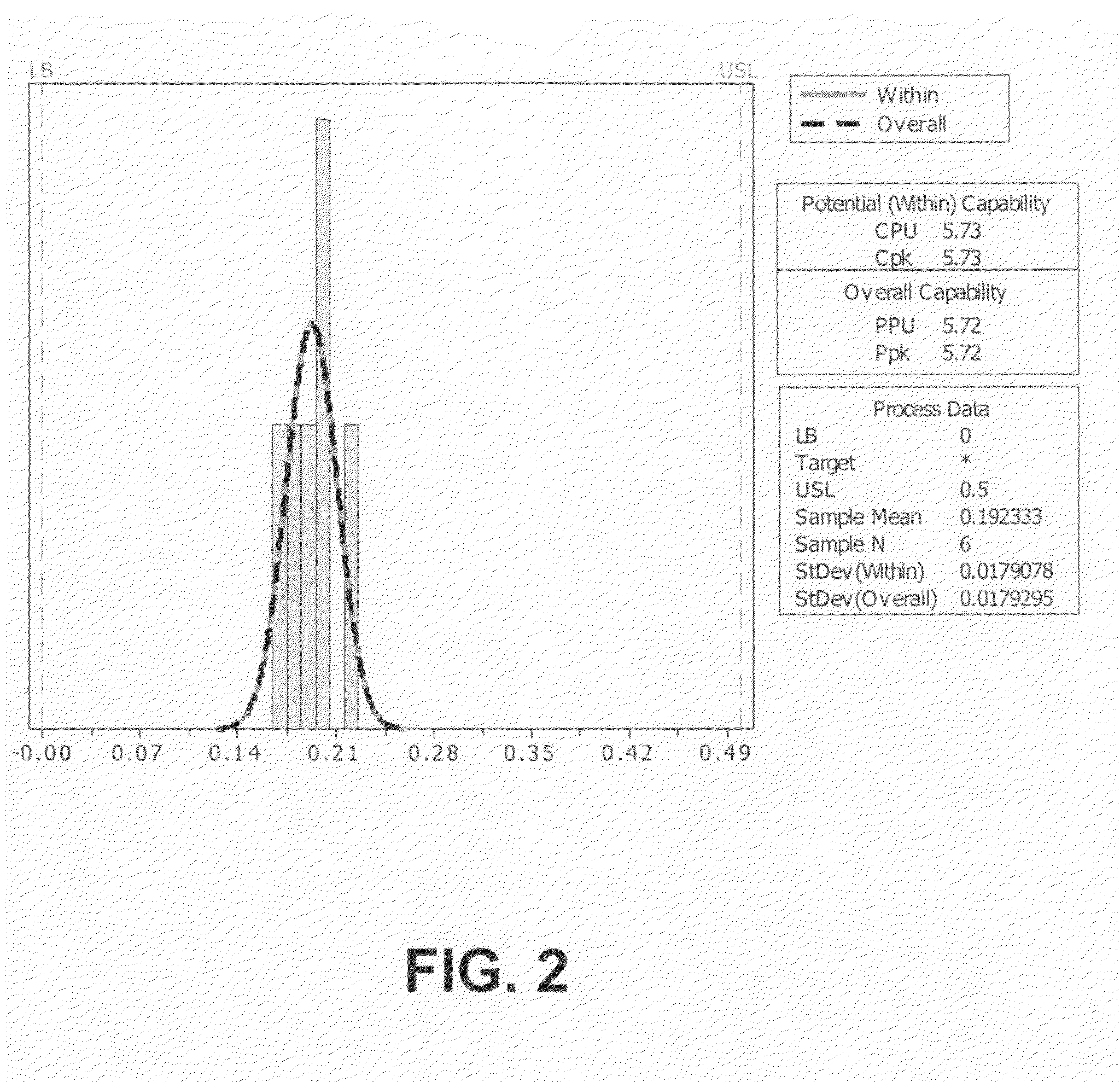Processes for the production of buprenorphine with reduced impurity formation
a technology of impurity formation and buprenorphine, which is applied in the field of buprenorphine or its derivatives, can solve the problems of low overall yield and achieve the effect of increasing the yield and purity of buprenorphin
- Summary
- Abstract
- Description
- Claims
- Application Information
AI Technical Summary
Benefits of technology
Problems solved by technology
Method used
Image
Examples
example 1
Synthesis of Compound (IIa)
[0114]Compound (Ia) (i.e., thebaine) was converted to compound (IIa) (CA index name=1-[(5α,7α)-4,5-epoxy-3,6-dimethoxy-17-methyl-6,14-ethenomorphinan-7-yl]-ethanone) via a Diels Alder reaction. For this, 575 g of wet technical grade thebaine (72 wt % by assay=414.11 g; 1.329 moles; 28% water) was suspended, under nitrogen, by agitation in 1 L of isopropanol (ACS grade), and then 264 mL of 90% methyl vinyl ketone (˜2,2 equiv) and 200 mL of water were added to the mixture. The total water in the mixture was equal to the thebaine-derived water+the water added [(574×0.28=161 mL)+200 mL=361 mL; ˜35% v / v relative to isopropanol]. The mixture was then gently warmed to reflux (79°-80° C.) over a period of 4 hours using an efficient condenser with a scrubber to minimize loss of methyl vinyl ketone vapors. The reaction was slightly exothermic but not self-sustaining. The mixture was then heated at 79°-80° C. for 14 hours. (After about 1 hour at reflux, the heterogen...
example 2
Isolation of Compound (IIe) with Seeding
[0117]Compound (IIa) was prepared essentially as detailed above in Example 1 except that seed crystals of compound (IIa) (1 g per 20 kg of thebaine) were added at 45° C. when the reaction was cooling. The assay values were similar except that the 7-β epimer levels were consistently about 0.19 wt %.
example 3
Synthesis of Compound (IIIa) Hydrogenation in Protic Solvent
[0118]The following example illustrates the traditional hydrogenation method for reducing the double bond in compound (IIa) to form compound (IIIa) (CA index name=1-[(5α,7α)-4,5-epoxy-18,19-dihydro-3,6-dimethoxy-17-methyl-6,14-ethenomorphinan-7-yl]-ethanone). Approximately, 8.5 kg of compound (IIa) (22.3 moles) was added portion-wise with stirring to a hydrogenation reactor containing 41 L of glacial acetic acid. After the starting material was dissolved, 223 g of platinum dioxide slurried in 1 L of acetic acid was added to the resulting solution. Hydrogenation was initiated at 15 psig hydrogen pressure at room temperature. The temperature was kept below 40° C. and the reaction was run for approximately 18 hours. The catalyst was removed by filtration through diatomaceous earth, and washed with acetic acid (3×1 L). The filtrate was added slowly to a mixture of 54 L of concentrated ammonium hydroxide, 54 kg of ice, and 42 L ...
PUM
 Login to View More
Login to View More Abstract
Description
Claims
Application Information
 Login to View More
Login to View More - R&D
- Intellectual Property
- Life Sciences
- Materials
- Tech Scout
- Unparalleled Data Quality
- Higher Quality Content
- 60% Fewer Hallucinations
Browse by: Latest US Patents, China's latest patents, Technical Efficacy Thesaurus, Application Domain, Technology Topic, Popular Technical Reports.
© 2025 PatSnap. All rights reserved.Legal|Privacy policy|Modern Slavery Act Transparency Statement|Sitemap|About US| Contact US: help@patsnap.com



